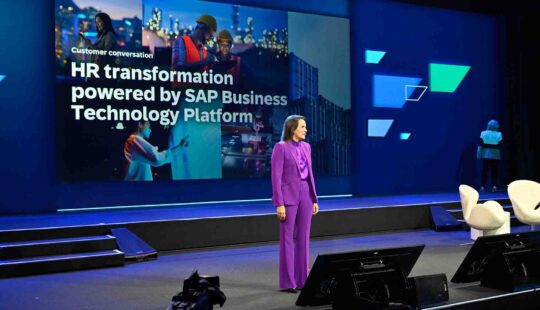Kmart Group has been on a journey to reinvent its human resources (HR) strategy. Tristram Gray, the company’s chief people and capabilities officer, joined me for a fireside chat to talk about its HR transformation journey and his perspectives on the future of human experience management (HXM) and the future of work.
Q: Can you start by telling us a bit about how Kmart’s HR transformation journey started?
A: Kmart Group is made up of Kmart Australia/New Zealand, Target and Catch, Kmart Group Asia and employs about 50,000 team members working in over 500 stores around Australia and New Zealand. These team members work in stores all the way through to design roles, senior professional roles, and so on in our national offices. We are part of the Wesfarmers Group, which is a large conglomerate here in Australia with over 100,000 employees.
In 2018, Wesfarmers made the decision to spin off a large supermarket business that owned the majority of our HR systems. This change kickstarted the transformation of our HR technology in Kmart Group. We had a 15-year-old HR system that came with a number of challenges and frustrations. The de-merger of the supermarket business gave us a great opportunity to look at what technology we needed and how we wanted our HR system to support our business, not only today but for the next 10 to 15 years.
What were some of the key benefits you were looking to get out of your HR transformation?
What was really important for us was partnering with an organization that had the stability and ability to manage multi-sites and multi-levels of team members, and the ability to interface with other systems within the business. For example, we were already running SAP finance. We also wanted a partner that understood the challenges that we had and would be able to grow and evolve with us, and to provide thought leadership. We selected SAP SuccessFactors and kicked off our implementation in March 2019.
At the start, we worked very closely with the sales and technical teams at SAP to not only understand the systems and processes, but also the opportunity that it brought to re-engineer what we were doing and find ways to automate and optimize processes to be more efficient. More importantly, we wanted to make the team member experience better and increase self-service.
We launched SAP SuccessFactors Employee Central, SAP SuccessFactors Payroll, SAP SuccessFactors Recruiting, and SuccessFactors Compensation in March 2020, and went live with performance and talent management solutions in January 2021. We are now live with the entire SAP SuccessFactors HXM Suite and seeing an amazing difference.
We know employee experience absolutely correlates to a good customer experience and greater employee engagement. What are your thoughts on HXM and how is Kmart Group embodying the values of HXM?
It really helped us in terms of thinking about what we want our team members’ experience of working at Kmart to be like and how we could address their pain points. Of the 39,000 team members in Kmart Group for example, approximately 15,000 of them are under 18 years old. Their expectation of technology is that it will be seamless, digital, and an always-on cloud-based environment. We have to think about the experience that works for them, but at the same time does not make the technology too intimidating for the 30-year veteran in one of our stores. We have worked really hard to make our HR technology intuitive, easy to use, and self-operating right from the candidate experience. We are recruiting 10,000 team members annually, so we want to make sure that they can access things like their pay quickly and straight away.
At the same time, we also need to demystify it for the older generations in our workforce who are not as used to doing things that way. One thing that is interesting is that with such a large cohort of young team members, often it’s about their parents’ experience as well. How do we make it easy for parents to navigate? If parents find our systems clunky, that can affect their perception of Kmart. And since they are often our customers, it can have a negative impact on our reputation.
Kmart went live with talent management solutions, including SAP SuccessFactors Performance & Goals, in January. What is the HR team most excited about in using those?
As we’ve gone through the implementation process and we’re seeing it come to life with our recent review cycle, one thing that is exciting is just seeing the digitalization of everything. For the first time, we have had digital goal sheets and digital performance reviews in the system. We no longer have to work off of a PDF or a piece of paper somewhere. We can allocate goals across several hundred team members with one touch of a button across instead of relying on managers to go in and add them manually. When we think about the human experience, this is really making a difference.
Within the HR team, the ability now to report on progress has been wonderful. We know exactly what stage of their performance review has been completed and by how many people and which areas might need some more support. We can be far more targeted in the way we support the business. As chief people and capability officer, this is incredibly important because it gives me the ability to direct my resources to the people and areas that need it rather than resorting to blanket emails or universal communications. I can better understand why we are having challenges in some areas: Is it a capability issue? Is it an awareness issue? Is it a training issue? Is it a work diversity issue?
For the first time, we have visibility into the data. We can actually see how many performance reviews are being completed, whereas in the past we maybe had a gut feeling but couldn’t actually drill into the data. Now we can give real time data and insights to the rest of the business. This is important for our team members, too, because it’s improving their experience. Instead of spending weeks in a spreadsheet, they can be more strategic and deliver more value to the business.
In the last 20 years, the nature of work has changed dramatically. What’s your perspectives on the next couple of years? How do you see work changing in the future?
First is the importance of simplicity. The days of technology being highly complicated for end users — whether they be customers, team members, or the business itself — is no longer acceptable. The intuitive nature of technology will increase, which will make it more ubiquitous, more universal, and easier to use. Organizations that don’t have a digital mindset will rapidly fall behind. Technology will not become any less complex, but the user experience must become simpler and more intuitive. The use of APIs and system interface aspects to multiple systems is going to become increasingly important as well.
Second, how you collect, utilize, and leverage the data you have within an organization is going to become increasingly important. There will only be more data going forward. The critical piece is how you organize that data and how you make sense out of it quickly. Otherwise we will all drown in data lakes and will have so much data it’ll almost be a “analysis paralysis” situation. Organizations that can quickly work out how to synthesize that data and organize it and correlate it in a way where they can make sense of it and correlate multiple data sets from what may appear to be disparate parts of the organization or customers will really have an advantage.
Last is the new hybrid world of working that we’re now in. Technology plays a key role in this, but I think it’s also about organizations that can adapt and execute while prioritizing the human experience at work. Face-to-face interactions and working in the office still have an important role to play, but it will be limited to work where you need to collaborate and build connections, enduring relationships, and trust. At the same time, we need quiet spaces and times that are free of distractions, whether that’s in the office or at home or at a café.
The speed of change won’t reduce in organizations, but organizations need to figure out how they will take people on that change journey. We can’t start with the technology. We have to start with what our customers and team members needs and then work backwards from that point; that is, start with the end user in mind.
Marc Havercroft is chief customer officer for SAP SuccessFactors.



